


A Journey Through Innovation And Diversity
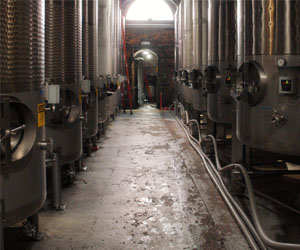
The world of wine is a vast and ever-evolving landscape, and one of its most exciting chapters is the rise of New-World wines. New-World wines, as opposed to Old-World wines, come from regions where the art of winemaking has been developed more recently. This new generation of wine-producing regions, often located outside of Europe, has brought innovation, diversity, and a fresh perspective to the world of wine. In this article, we will explore what makes New-World wines distinct and their growing significance in the wine industry.
Innovation And Experimentation: New-World wine regions, which include countries like the United States, Australia, New Zealand, Chile, and South Africa, have embraced innovation as a driving force in their winemaking processes. Unlike Old-World regions with deep-rooted traditions, New-World winemakers have had the freedom to experiment with different grape varieties, winemaking techniques, and aging methods. This innovation has led to the creation of unique and bold wines that often break away from conventional European styles.
Diverse Terroirs: One of the remarkable features of New-World wines is the wide range of terroirs they encompass. New-World wine regions can be found across the globe, from the high-altitude vineyards of Argentina to the cool-climate wine regions of Oregon. This diversity allows for the cultivation of various grape varieties, each suited to specific terroirs. As a result, New-World wines offer an array of flavors and styles that cater to a broad spectrum of preferences.
New Grape Varieties: New-World winemakers have been open to experimenting with grape varieties from around the world, introducing lesser-known grapes into their vineyards. For example, in the United States, you'll find varieties like Zinfandel and Petite Sirah, which are less common in European regions. This willingness to diversify grape varieties has led to the discovery of new and exciting flavor profiles, expanding the options available to wine enthusiasts.
Emphasis On Approachability: New-World wines are often celebrated for their approachability. While Old-World wines can sometimes come across as complex and reserved, New-World wines tend to be more fruit-forward, making them accessible to a wider audience. This approachability has contributed to the global popularity of New-World wines.
Innovative Aging Techniques: Many New-World winemakers have embraced modern aging techniques, such as the use of oak barrels from different regions, new oak versus old oak, and a range of toasting levels. These practices have helped create wines with distinctive characteristics, pushing the boundaries of traditional winemaking.
Sustainability And Environmental Practices: New-World wine regions have also been at the forefront of sustainable and eco-friendly winemaking practices. Many vineyards and wineries prioritize sustainability, organic farming, and environmentally responsible practices. This commitment to preserving the land and minimizing the environmental impact is a crucial aspect of New-World winemaking.
Growing Global Recognition: Over the years, New-World wines have earned their place on the international stage. Their wines have garnered prestigious awards and accolades, and they are now regarded as peers to their Old-World counterparts. Wine enthusiasts are increasingly looking to New-World regions for exciting and unique wine experiences.
New-World wines have redefined the wine industry, offering a rich tapestry of flavors and styles that reflect the diversity of the regions where they are produced. These wines continue to captivate wine enthusiasts and experts alike, and their influence on the global wine scene is undeniable. As New-World winemakers continue to innovate and explore their unique terroirs, the future of wine promises even more exciting and diverse options for all who appreciate the beauty of this ancient beverage.
Unlocking Beauty With Natural Ingredients
 Healing With Herbs: Herbs have been used for centuries in traditional medicine and beauty practices. Ingredients like chamomile, calendula, and lavender possess anti-inflammatory and healing properties, making them ideal for calming irritated skin and promoting an even complexion.
Healing With Herbs: Herbs have been used for centuries in traditional medicine and beauty practices. Ingredients like chamomile, calendula, and lavender possess anti-inflammatory and healing properties, making them ideal for calming irritated skin and promoting an even complexion.
The Miracle Of Essential Oils: Essential oils are concentrated extracts from plants and are known for their therapeutic properties. Lavender, tea tree, and rosehip oils are excellent choices for skincare, offering benefits such as acne reduction, scar healing, and anti-aging effects.
Fruit Extracts: Fruits like papaya, pineapple, and citrus fruits contain natural enzymes and acids that gently exfoliate the skin, leaving it brighter and more radiant. They are commonly found in natural peels and masks.
The Green Beauty Revolution: The natural beauty movement has given rise to the concept of "green beauty." Green beauty emphasizes the use of clean, natural, and eco-friendly ingredients. Many beauty companies are now formulating products without harmful chemicals, ensuring they are safe for both individuals and the environment.
DIY Beauty: For those who prefer a hands-on approach, DIY beauty using natural ingredients is becoming increasingly popular. Homemade masks, scrubs, and serums can be easily prepared with ingredients from your kitchen or garden, allowing you to tailor them to your specific skincare needs.


The Art Of Creative Upcycling
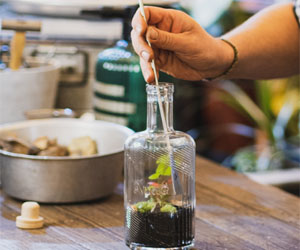 Inspiration And Community
Inspiration And Community
Trash to treasure often inspires others to embrace their creativity and sustainability. There are numerous online communities, social media groups, and DIY websites dedicated to upcycling. These platforms provide opportunities to share your projects, gain insights, and connect with like-minded individuals who share a passion for creative reuse.
Getting Started With Upcycling
Start Small: If you're new to upcycling, begin with small, manageable projects. Repurposing an old picture frame or transforming a piece of clothing can be a great starting point.
Gather Supplies: Depending on your chosen project, collect the necessary supplies, which may include tools, paint, glue, or other materials.
Seek Inspiration: Look for inspiration in books, magazines, online platforms, and by observing the work of other upcyclers.
Learn Techniques: Familiarize yourself with upcycling techniques and methods. Learning how to properly clean, repair, or transform items is essential for successful projects.
Take Safety Precautions: Depending on your project, be aware of safety precautions. When working with tools, chemicals, or heavy materials, safety should be a top priority.
Exploring The Art Of Sewing Techniques
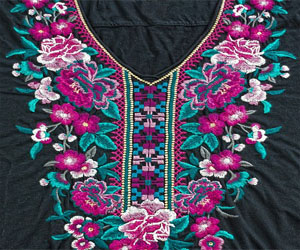 Backstitch: This technique reinforces seams by doubling back through the previous stitch. It's essential for creating strong, secure joins in fabric.
Backstitch: This technique reinforces seams by doubling back through the previous stitch. It's essential for creating strong, secure joins in fabric.
Zigzag Stitch: The zigzag stitch is used to finish raw fabric edges to prevent fraying. It's also handy for sewing stretch fabrics and creating decorative edging.
Seam Allowance: Understanding the appropriate seam allowance is crucial for constructing well-fitted garments and avoiding unnecessary bulk in seams.
Advanced Sewing Techniques: Once you've mastered the basics, you can explore advanced sewing techniques that offer more creative and functional possibilities:
Gathering: This technique involves stitching multiple rows of long, loose stitches, which are then pulled to create gathers or ruffles in the fabric. Gathering is often used in creating full skirts, puff sleeves, or decorative elements.
Bias Binding: Bias binding is used to finish raw fabric edges, providing a clean and durable edge with the help of strips cut on the diagonal (the bias) of the fabric. It's ideal for curved hems and necklines.
Darts: Darts are folded, stitched seams that provide shape and contour to garments, particularly for a better fit around curves like the bust, waist, or hips.
Blind Hem: The blind hem stitch is used for invisible hems on garments. It creates a nearly undetectable hemline on the right side of the fabric.
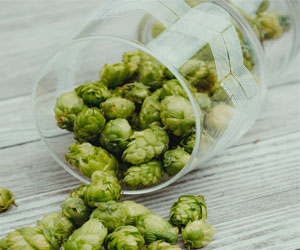




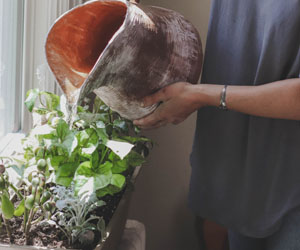
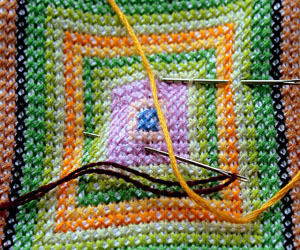

Exploring The Benefits
 Medicinal Properties
Medicinal Properties
Herbs have been used for centuries as natural remedies for a wide range of ailments. Lavender is renowned for its calming and soothing properties, chamomile for its digestive benefits, and peppermint for its ability to alleviate headaches. Growing these herbs allows you to harness their medicinal powers for home remedies and holistic wellness.
Aromatherapy
The fragrant oils found in herbs are not just for flavor and aroma. They also have therapeutic qualities. Lavender, for instance, is widely used in aromatherapy to promote relaxation and reduce stress. Aromatic herbs can transform your garden into an outdoor sanctuary for your senses.
Environmental Benefits
Herb gardens contribute to a more sustainable and eco-friendly lifestyle. By growing your herbs, you reduce the demand for commercially cultivated, chemically treated herbs. This practice conserves resources and minimizes the environmental impact of herb production.
Cost-Effective
Maintaining an herb garden can save you money in the long run. Store-bought herbs can be expensive, and they often come in quantities larger than you need, leading to waste. By growing your herbs, you can have a fresh supply on hand while minimizing expenses.
Educational Value
Herb gardening offers a valuable learning experience. It can be an engaging and educational hobby for individuals and families alike. Gardening teaches responsibility, patience, and an appreciation for the natural world. It allows you to connect with the earth and understand the cycles of growth and renewal.
Aesthetic Pleasure
Herb gardens are not just practical; they are also beautiful. The lush green foliage, colorful blossoms, and fragrant aromas create a visually appealing and soothing garden space. Herbs can be integrated into ornamental garden designs, adding both utility and charm.
Crafting Creativity And Fulfillment
 Sense Of Accomplishment: There's a profound sense of accomplishment that comes with completing a woodworking project. The act of seeing your vision take shape, from the initial design to the final finished piece, is incredibly rewarding. It builds confidence and self-esteem, and each project serves as a tangible testament to your skills and dedication.
Sense Of Accomplishment: There's a profound sense of accomplishment that comes with completing a woodworking project. The act of seeing your vision take shape, from the initial design to the final finished piece, is incredibly rewarding. It builds confidence and self-esteem, and each project serves as a tangible testament to your skills and dedication.
Learning And Growth: Woodworking as a hobby is a journey of continuous learning and growth. It's an opportunity to acquire new skills and techniques, from mastering joinery methods to understanding different types of wood. The learning curve is steep, but the journey is part of the joy, as you gradually progress from simple projects to more complex creations.
Customization And Personalization: One of the most appealing aspects of woodworking as a hobby is the ability to customize and personalize your creations. You can design and build items that fit your specific needs and preferences. Whether it's crafting a piece of furniture that matches your home decor or constructing a gift that resonates with a loved one, woodworking empowers you to create truly unique and meaningful pieces.
Community And Camaraderie: Woodworking enthusiasts often find a supportive and like-minded community. Whether you're sharing your latest project with fellow hobbyists at a woodworking club, participating in online forums, or attending workshops, the sense of camaraderie and shared passion is a cherished aspect of the hobby.
Preserving Tradition And Heritage: Woodworking as a hobby allows individuals to carry forward traditions and heritage. Many woodworking techniques have been passed down through generations, and by engaging in this craft, you become a part of this rich legacy, preserving and passing on valuable knowledge.
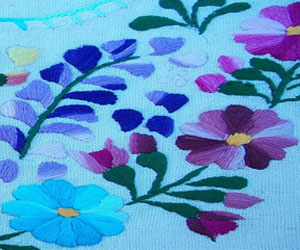 The World Of Textile Art: Beyond the realm of fashion, textile art is a profound expression of fabric creativity. Artists use various techniques like embroidery, quilting, and weaving to craft stunning pieces that blend traditional and contemporary elements. Each piece tells a story, often reflecting the artist's emotions, experiences, and cultural influences.
The World Of Textile Art: Beyond the realm of fashion, textile art is a profound expression of fabric creativity. Artists use various techniques like embroidery, quilting, and weaving to craft stunning pieces that blend traditional and contemporary elements. Each piece tells a story, often reflecting the artist's emotions, experiences, and cultural influences.
Fabric Creativity In Home Decor: Home decor is another arena where fabric creativity shines. Whether it's hand-stitched cushions, beautifully quilted throws, or intricate wall hangings, textiles have the power to transform a living space. Fabric creativity allows individuals to customize their homes, infusing them with personal style and warmth.
Eco-Friendly Fabric Creativity: In recent years, fabric creativity has also embraced eco-friendliness. Artists and designers are increasingly using sustainable and upcycled materials to create unique pieces. This eco-conscious approach not only reduces environmental impact but also adds depth to the narrative behind each creation.